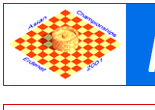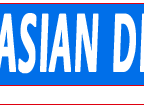| Mongolia lies
in the heart of the Central Asia, between the Russia in
the north and the People's Republic of China in the East,
west and south. Mongolia covers an area of 1.566.500 sq.km
and fifth largest country in Asia and seventeenth largest
in the world. |
There is great
number of Mongolian people all over the world. According
to researchers, about 7 million people who speak and read
Mongolian, live the Mongolian way of life, are scattered
throughout various countries. 680.000 people inhabit the
capital city of Ulaanbaatar. |
|
Mongolia
is a land of natural contrasts. While traveling here
you may find yourself in remote wild forest, alpine
meadows, Southern Gobi semi-deserts, and vast plains
to the east and snow clad mountains to the west. Mountains
cover over 40 percent of Mongolia's territory. There
is relatively small area of plain /250.0 sq.km/.
Mongolia is approximately 1580
meters above sea level. The longest rivers are Selenga,
Orkhon, Tuul, Khovd, Kherlen and the Khangai Gol.
Mongolia is rich in mineral resources.
Deposits of coal, iron, copper ore, tungsten, phosporites,
gold, silver, tin, zinc and fluorspar have been all
discovered here.
|
|
The
climate of Mongolia has strong continental features.
One of the characteristic qualities of the climate
is the exceptionally sharp variation of the temperatures
not only during the seasons of the year, but also
during the course of the day.
A constant, high atmospheric pressure
and low humanity are also characteristic.
|
 |
| Mongolia
is a developing and democratic country. It has diplomatic
relations with more than 140 countries. |
 |
| One
of the oldest nations in the world that has left
a noticeable imprint in human history. Nomadic livestock
breeding has dominated the economic activity of
Central Asian people since time immemorial. |
|




